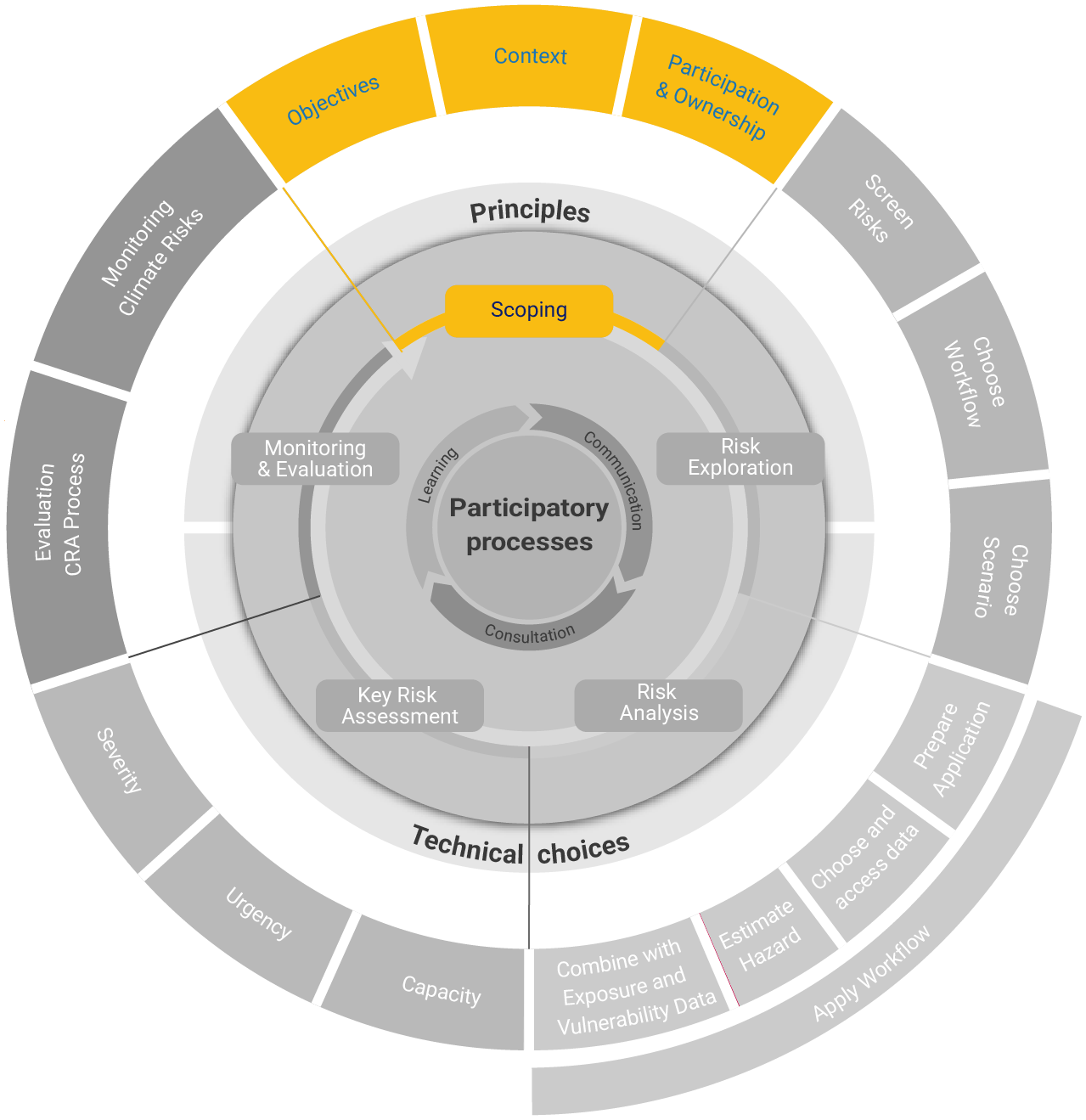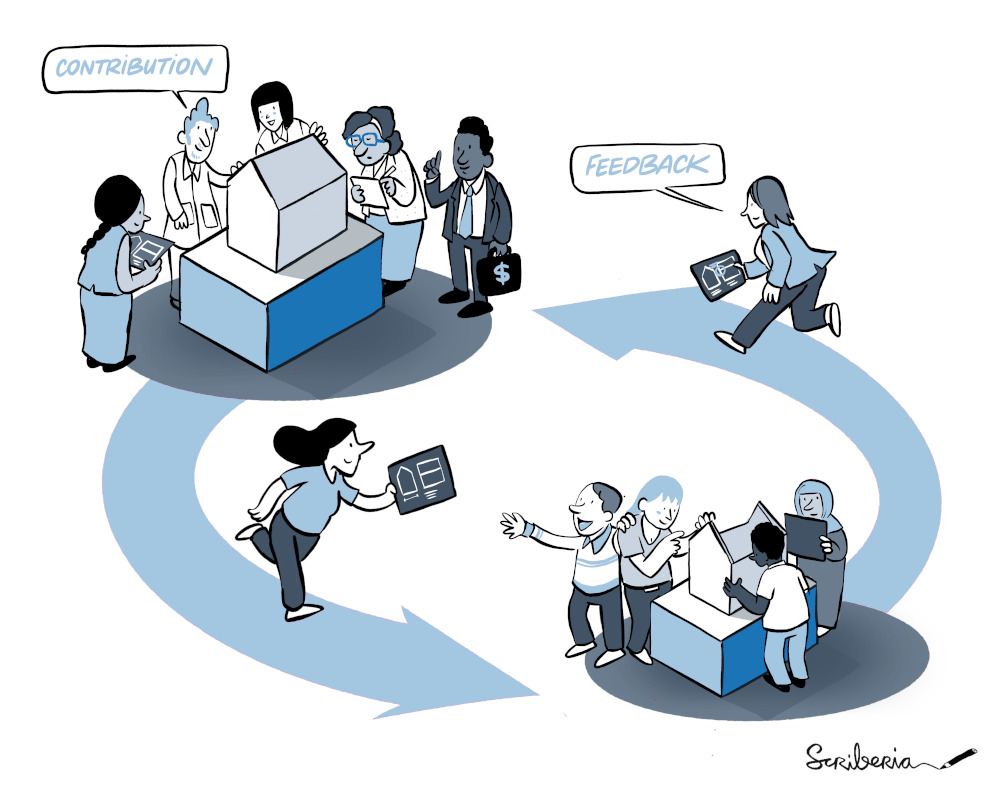Scoping#

A comprehensive CRA profits from an extensive scoping as it sets the ground for further steps and therefore lays the foundation for the scope and quality of the CRA. This initial process defines objectives (desired results of the analysis), context (subject of analysis, conditions for implementation), identifies stakeholders and assigns risk ownership. This step should result in an agreement on the objectives of the CRA and on the approach to be used for the analysis. All sub-steps are informed by the predefined set of principles emerging from the conceptual background.
The definition of objectives is an important task to better understand purpose, expected outcome and temporal and geographical boundaries of the CRA. This may entail a first brainstorming exercise, outlining expectations and needs and may already include relevant hazards, impacted sectors or vulnerable or disproportionally affected groups, together with an operational timeline of CRA activities. It is beneficial to outline the temporal and spatial boundaries as well as limitations of the risk assessment, thus providing relevant insights for next steps of the CRA.
When conducting the scoping step, a region should elaborate on the context of their CRA (context analysis) by linking it both to the background that it comes from as well as the space that it will inform. This implies a broad contextualization ranging from risk relevant governance and policy aspects for the region (procedural, legislative, institutional conditions), the formulation of a clear system definition for the risk assessment including temporal and spatial dimensions as well as the consideration of available time and resources.
The ideal implementation of an inclusive CRA is hybrid and thus combines top-down application of knowledge together with bottom-up perspectives and experiences. Therefore, it is important for a region to decide the extent of participatory processes that are desired, also in the light of available resources. Once this is clarified, it is necessary for a region to identify a first set of stakeholders by listing representatives of, for example, impacted sectors, vulnerable groups or disproportionally affected areas, ministries, academia, civil protection agencies or other local and regional entities involved in CRM planning. Besides the Who, it is also relevant to decide When and How stakeholders, experts and priority groups should be included. Planning this thoroughly is important as stakeholder participation may lead to an increase of (time) efforts. Furthermore, in this step it is crucial to allocate ownership of risk to ensure communication and efficient CRM by assigning responsibility for the relative risk to stakeholders or the executing entity.

Fig. 6 Illustration created by Scriberia with The Turing Way community. CC-BY 4.0. 10.5281/zenodo.3332807#
Throughout this task, relevant principles from the conceptual background should be reflected and find application through, for example, stakeholder selection, setting of goals and boundaries, and clearly defining the work plan to ensure quality and rigour.
Tip
Stakeholder selection is not necessarily concluded in the Scoping phase. Depending on a region’s Risk Outcome, the inclusion of stakeholders may be reassessed or changed as part of the Key Risk Assessment step which evaluates outcomes of the Risk Analysis, and thus indicates a back-and-forth of the process.
Tip
It can be beneficial for regions to include national (climate) risk or adaptation documents such as risk and vulnerability assessments prepared in an EU context.
